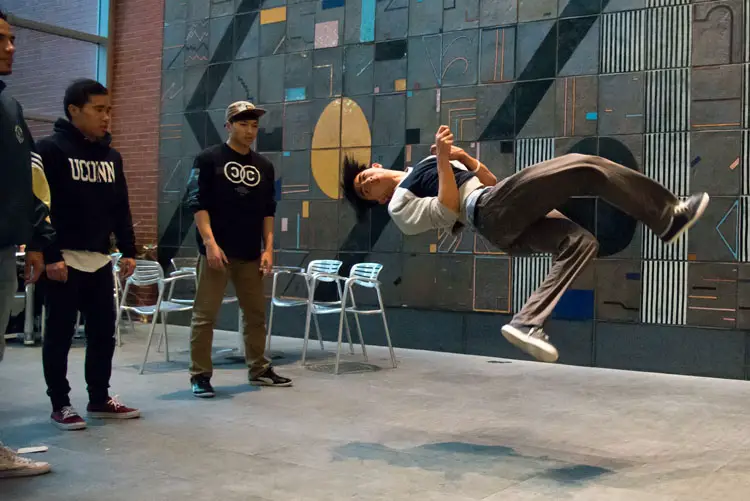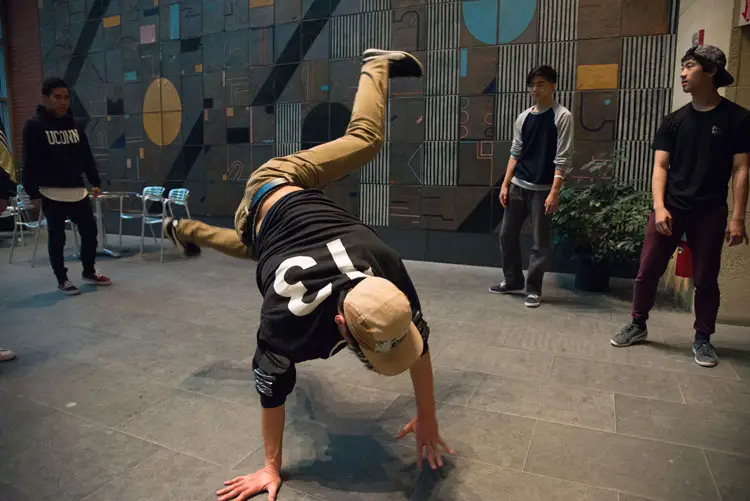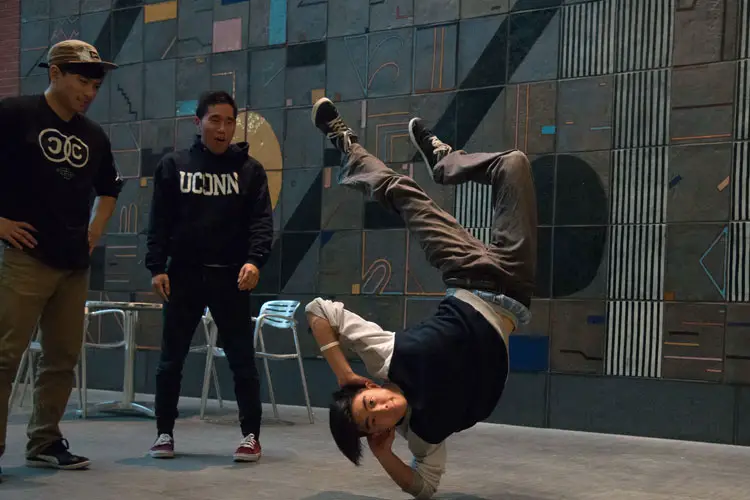Josh Colon and Dustin Ping, president and vice president of the Break Dancing Club at the University of Connecticut, had a unique criterion when deciding which college to attend: Did it have a break dancing group? Fortunately, their college did. After four years, the two have become so involved in break dancing that they couldn’t imagine their college experience without it. Ping had discovered break dancing in high school through YouTube. After watching a few videos, he was hooked. “I would just type in, ‘how to break dance’ on YouTube. I didn’t know anyone who did it, so it was just me and the internet,” he says.

Now, Ping and Colon have found a community of dancers at UConn’s Break Dancing Club. The b-boys practice six times a week, two hours per session, working on group routines and their individual styles. “Style” in breakdancing comprises four elements: top rock (standing dance moves), footwork, freezes (striking poses such as handstands) and power (high-energy moves like headspinning).
According to Colon, one common misconception people have about break dancing, and power in particular, is that it requires super-human muscle power. “Really it’s all about muscle memory,” Colon says. “It’s kind of like walking: When you first started walking, you couldn’t do it, but as you got older, you did it every single day and now you can walk flawlessly without even thinking about it.”
Members of the Break Dancing Club learn new moves from their peers. One of the most rewarding aspects of being in the club is seeing newbies make improvements, Colon says. “There are always times when you see a new member or someone who’s been practicing a specific move for a really long time [get the move]. Everyone’s just around each other, someone notices it, like ‘Oh my god you finally got that move!’ or ‘Wow that beginner finally is branching out!’” On the flip side, it can be frustrating when no one witnesses your improvements. “You look around and go, ‘Did anyone see that?!’” he jokes.

Another challenge, according to Ping, is the fluctuating membership of the group. Some members come every day, and others drop out after a few months. Colon added that break dancing is misunderstood. It is often perceived as an aggressive activity, but it really stems from a culture of love. He said break dancing originated as a way to replace street and gang violence, so it can seem violent on the surface.
“When you see people battling [in break dance sessions], it looks like they hate each other, but the moment the battle is over you see people hugging each other and giving each other high fives. Yeah we’re fighting, but we’re fighting through movement.”
The Break Dancing Club recently competed at Break U at NYU, an event for b-boys all over the East Coast. In addition to “jams” like this, they also perform at Asian Nite, an event run by the Asian-American Cultural Society at the University of Connecticut.
This month they are preparing to wrap up the season with other local competitions. Meanwhile, the b-boys will continue to work on their individual styles and get ready for the club’s next jam.

















